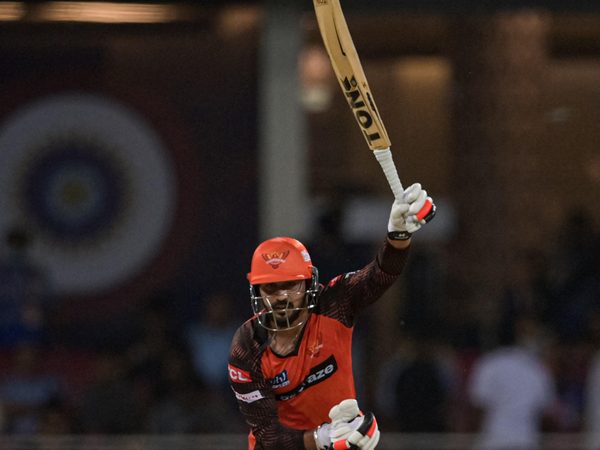
CricViz analyst Ben Jones makes the case for why the T20 Blast should introduce promotion and relegation to give the tournament a different dimension to other T20 leagues in the world.
When it comes to T20, the Indian Premier League is the big boy.
The king of the domestic tournaments, resplendent at the top with the best overseas players, the most power to negotiate an international window within which it can sit uninterrupted, and the biggest television audience around. It is a wonderful, varied competition, weakened in its current edition by the absence of the throbbing, visceral crowds which act as its chorus, emotional directors for the action. But the cricket itself is action enough. We have seen close contests, high scores, tight defences, spectacular catches, wickets, sixes. The IPL remains the best version of itself.
While the IPL put up its first double-header of the season, the T20 Blast had its own offering of concentrated T20 fun. Finals ‘Day’ spread itself over two wet Birmingham days last weekend, with Nottinghamshire – a county with a proud recent tradition of white-ball cricket, a clear focus on the format and a venue ripe for home advantage – coming out on top, beating Surrey in the last game of the English domestic season. It was a season which would, even if every game had been a dismal one-sided washout, have been a triumph. The work of the ECB and the sacrifices of the players involved will last far longer in the memory than any of the results.
Next season, all being well, will see the first edition of The Hundred. The broader debates have been had elsewhere, and we don’t need to rake them up again. It is the closest thing the ECB can create to the IPL – barring the format of the matches themselves – and the reasons for a tournament of this type are clear, straightforward, and hard to dispute even if you disagree with the tournament itself. The Hundred will go ahead, it will most likely be a success on its own terms, and the cricket it should provide will be close to the calibre and intensity we see in the IPL.
But where does that leave the Blast?
With the juggernaut up the road, the primary T20 tournament in England and Wales automatically serves a different function, both to its bigger, richer sibling, and to what the Blast has meant before. It acts as the more straightforwardly local tournament, with the areas of the country most notably and vocally neglected by the new format (Somerset and Durham among them) no doubt keen to register their frustrations by winning the whole damn thing. While The Hundred will act as a platform for the very best of English and Welsh youth talent, those at the tier below (either through youth, or late development) will have the opportunity to stake their case, and showcase their ability on a stage with plenty of eyes upon it.
Local loyalty, broader development, continuing existing rivalries – this is the domain of the Blast, a set of aims which establish it as a competition not inferior to the IPL, PSL etc, but consciously different.
However, it can do more to embrace that status – by splitting into divisions, and introducing promotion, and relegation.
One thing which stands against all high level T20 domestic leagues as they currently exist is that, well, they are not really leagues in the English sporting sense. They more resemble conferences, closed groups of teams where silverware is the highpoint, and the low point is simply finishing bottom. Failure is not punished, success is rewarded with fanfare and then a reset to where you were two months prior. You either win, or you lose.
Such is the model of many sporting cultures around the world, most notably the American structure to which so many look for inspiration. It has become the structure of the IPL, BBL, PSL, BPL, CPL, and Blast. Every team in these leagues, regardless of budget, history or personnel, begins the season on an even keel.
There are broader issues with this structure. For now, fans of Royal Challengers Bangalore, Kings XI Punjab or Lahore Qalandars will accept that their side is bad, that they never make it to the play-offs, and are always bothering the bottom of the table. Such are the way loyalties are made, even in the short periods of time that many English cricket fans seem to feel are anathema to true affection for teams. Yet ultimately, that loyalty won’t last forever, because what fans crave is not success or silverware, but tension, excitement, nervousness giving way to relief or dejection. It’s about the journey.
The agony of relegation is feeling. Seeing your side disappear into the abyss, no longer relevant, no longer prominent, is painful. Equal and opposite is the joy of promotion, the anticipation of the new, a sense of momentum and ambition. Anxiety is replaced by a steely focus on other results, on permutations whereby six wins from eight leaves you in control of your own destiny, five leaves you short, seven leaves you certain. Both of these feelings are fundamentally different to those available in the current T20 league structure. Relegation and promotion offers a different cluster of emotions, different to simply bashing your legs against the bottom of the pool, knowing you’ll never swim but can never drown.
Were other tournaments to fall for the allure of this sporting rise and fall, they would be backed into a corner. None of the elite competitions have more than eight sides and frankly, for a satisfying two-tier structure, you need at least six teams in each tier.
And so, the Blast has something in its favour which, ironically, is the very thing which has held it back for so long – the number of teams. By having so many sides, the Blast can divide into divisions with relative ease. Two divisions of nine worked for the Championship for many years, but alternative options could be explored. Three divisions of six, with 10 games a season home and away, does come with the threat of the bankable derbies not coming around every year, but such is the price you pay for actual sporting integrity.
For all the emotion that could be wrung from two or three divisions being introduced into the Blast, what’s more interesting is the potential tactical consequences. T20 is the most tactically sophisticated form of the game, but right now, almost all teams are trying to achieve the same goal – beat seven other sides to finish top of a closed league – and thus play broadly similar cricket. There is some variety, of course, and far more than we see in red-ball cricket, but by virtue of the fact they are all aiming for the same destination, the route taken is often largely the same.
Were we to look at relegation, then things would be rather different. Perhaps, as a newly promoted side looking to simply survive in Division One, you might exploit a more extreme strategy. Maybe an entirely spin attack and a top-class wicketkeeper – with the obvious benefits of clarifying recruitment, home surface preparation – would not be flexible enough to win you a “traditional” league season, but would offer a unique enough challenge to ensure the three or four wins out of 10 that guaranteed survival. Perhaps a side who play on a small ground could be encouraged to create ultra-flat wickets and pick a so-far absurd batting line-up, rolling the dice that twice, three times a season, it’ll come off – and that could be enough.
Look at the tactical eco-system of football. A side like Tony Pulis’ Stoke City can arrive in the top tier of the game, playing a very direct, physical form of football because such an approach is a route to 40 points, the acknowledged target for avoiding relegation. The best teams in the league play that team twice a season and, despite being used to negotiating the nuanced tactics of elite European football, struggle to adapt to this limited, more unique brand of football. They develop ways of countering it – playing out from the back, false nines, and plenty more – and the game becomes richer and more diverse. The same story is true of Swansea City under Brendan Rodgers, arriving into the Premier League playing one of the most progressive styles in Europe, representing cutting edge ideas as much as any of the teams at the top of the table. Plurality is as captivating as quality.
In essence, the Blast shouldn’t try to compete with The Hundred, or the IPL, or the other elite leagues – because it can’t. It wasn’t very close to doing so as the sole short-form competition in England and Wales, and it isn’t going to become easier in the new structure. What it can instead do, is construct itself as something alternative, something intelligent and creative and entirely unique in a landscape of top class but monochromatic leagues. In the shadow of the football behemoths – Premier League, Bundesliga, Serie A and La Liga – the next tier below of Primeira Liga, Ligue 1 and Eredivisie offer different thrills, not diluted ones.
Many will push back against this idea, because it establishes the Blast as a second-tier competition in the T20 jungle. But it’s worth emphasising – the Blast is already on that tier. It is not elite, and it will not grow more so. The fact that England created T20 cricket does not change this fact, and nor does the English cultural exceptionalism which has dogged arguments of this type for generations.
The way for the Blast to stay relevant, to attract talent above its station, to exist as a vital and productive element of the English and Welsh cricketing ecosystem, is to position itself as in some way unique. The Blast, more homespun and with talent spread far more thinly, has a charm that the Hundred will struggle to replicate; The Hundred will offer some of the highest standard domestic cricket ever played in this country. The Blast, more tactically rich and varied, would offer a breeding ground for coaches looking to advance their skills in a league completely unique, held up against the elite circuit.
An innovative alternative to the competition; a format that encourages talent from all over the world to come and take part; exploiting the 18 county structure of which many are so proud.
What could go wrong?








